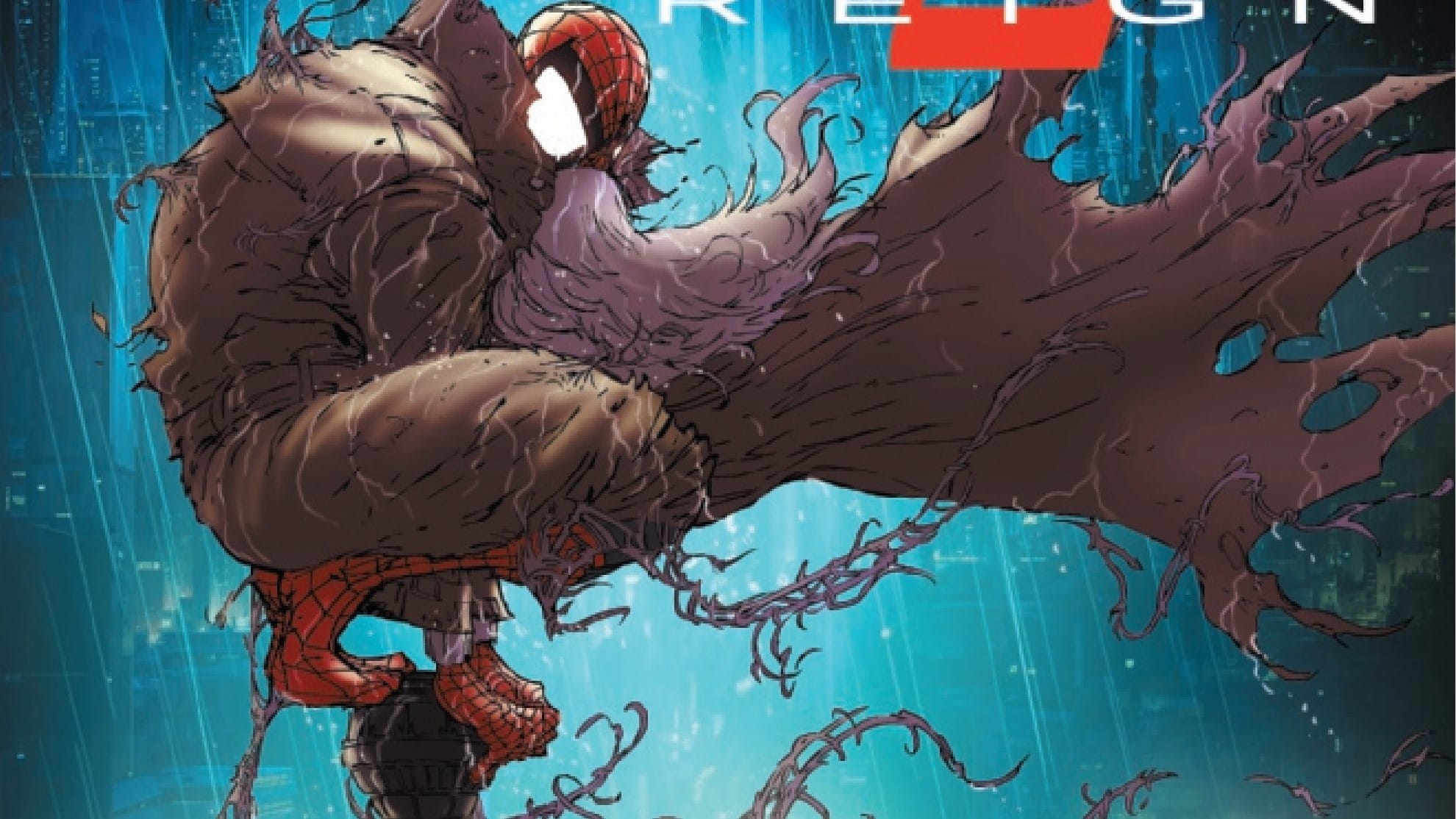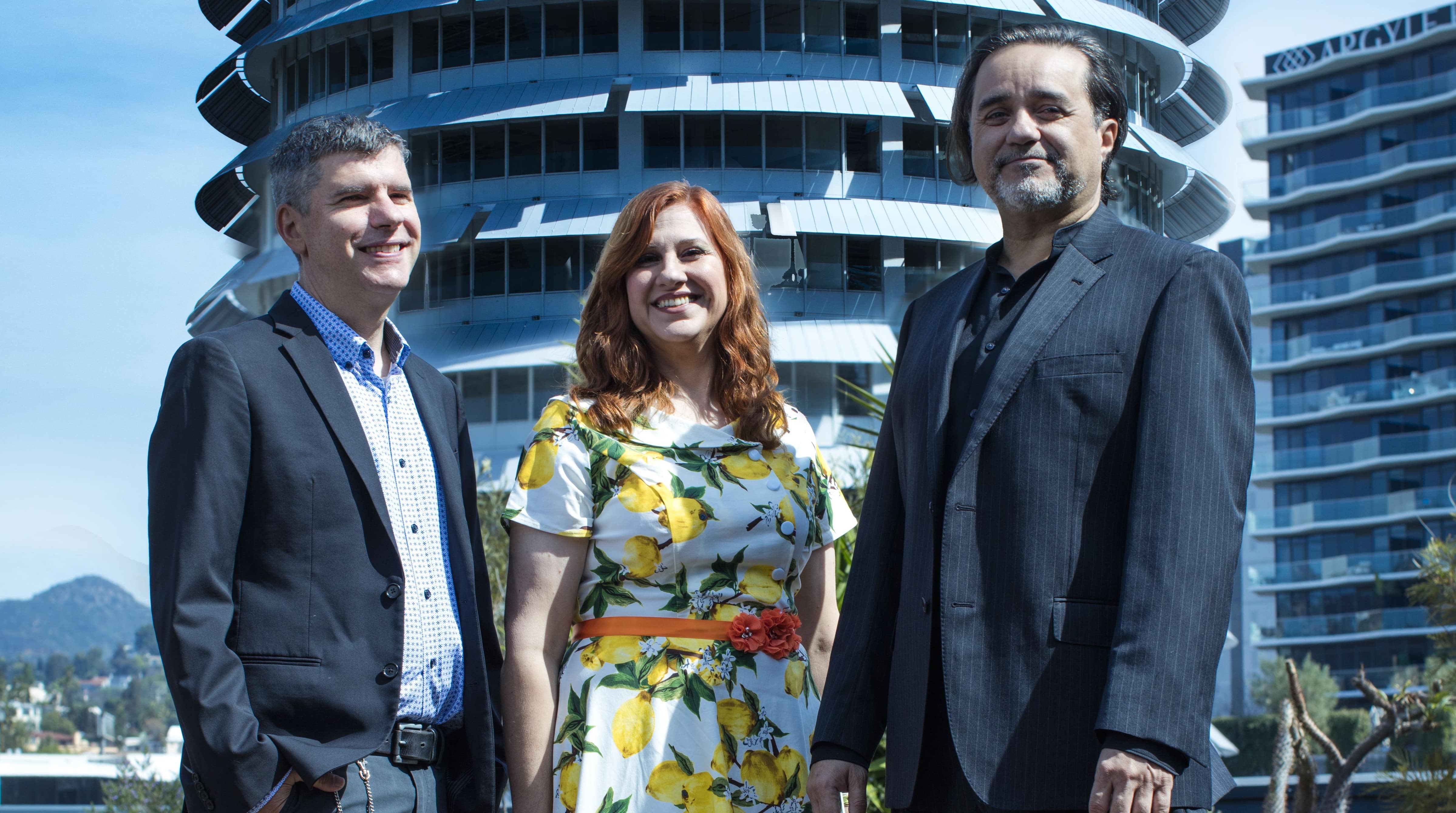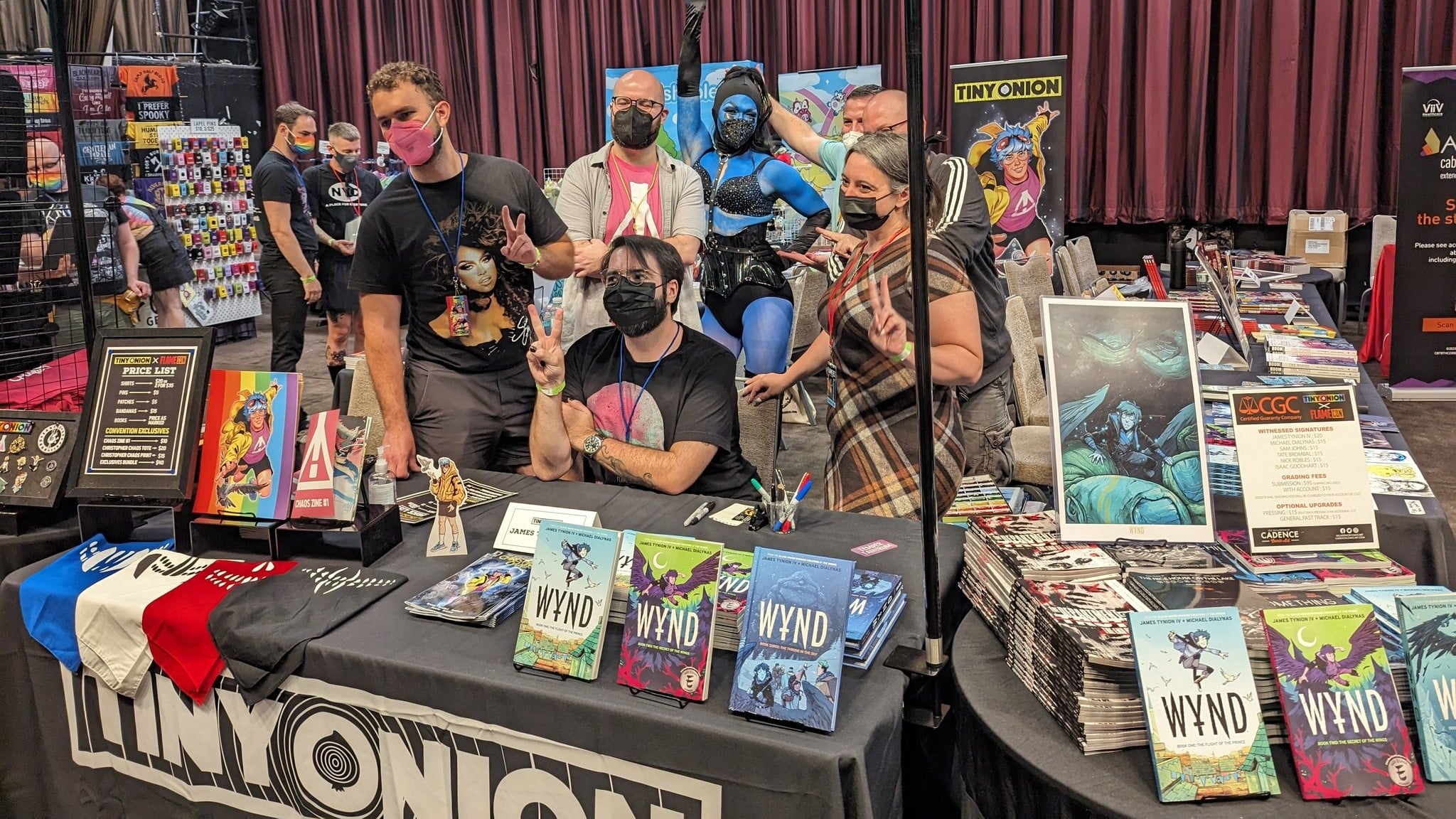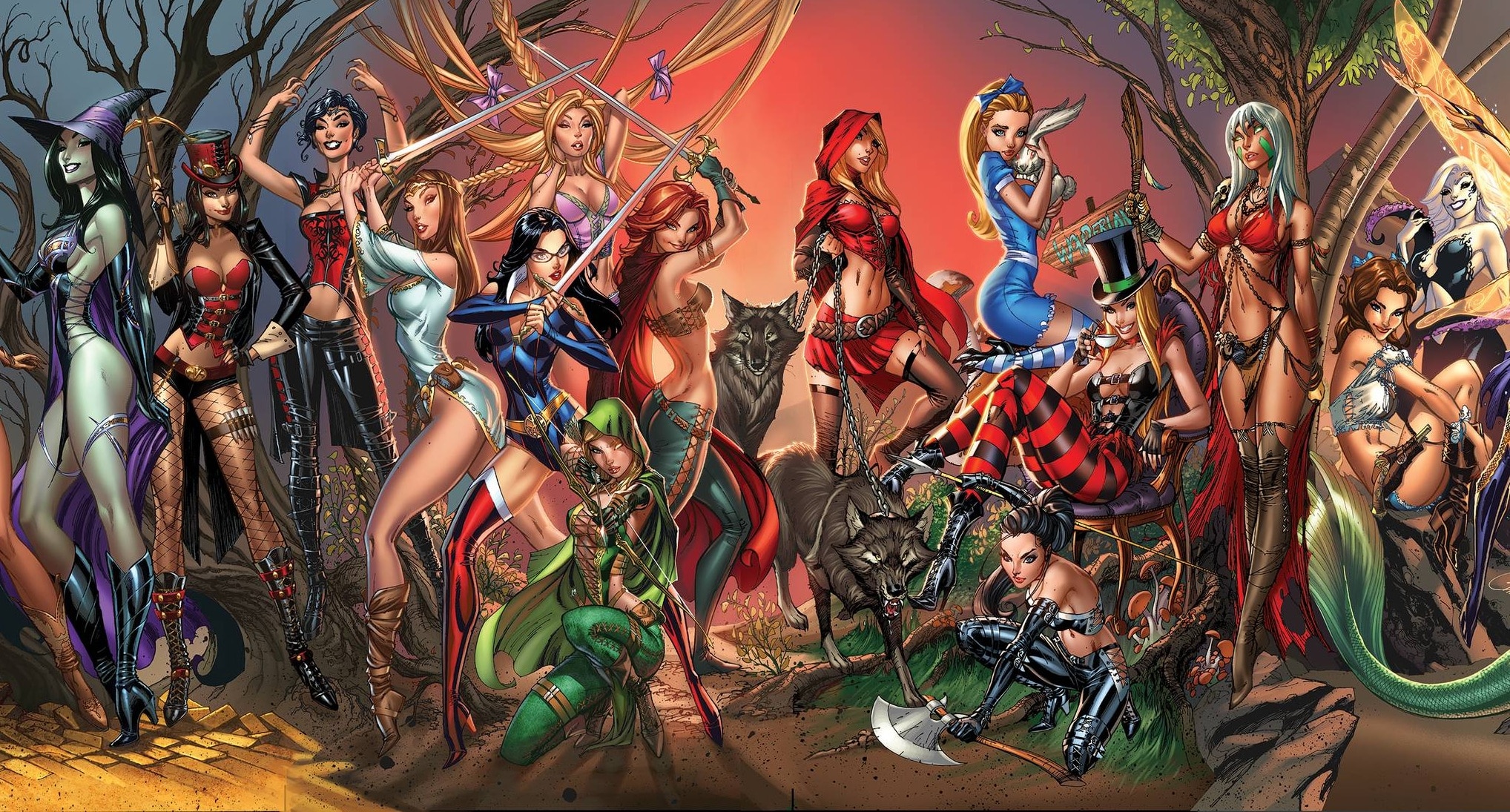There are many comics that are underrated, many comics that are controversial and many comics that have been given the wrong shake. Kaare Andrews’ Spider-Man: Reign is one such work. A flawed, messy, brilliant comic that engages with the time it came out while remaining relevant to this day, full of evocative imagery, fantastic fight scenes and some absolute corkers of twists.
Now, nearly 20 years later, Andrews returns to the story he told all those years back. And we were lucky enough to have a chat with him about his work on the original title, the upcoming sequel and some of his work outside Spider-Man.
Sean Dillon: What made you want to write a story about an older Spider-Man in the first place?
Kaare Andrews: When I broke into Marvel as a penciller, I immediately started pushing to write. My favorite comic guys were always the writer-artists, from Steranko to Byrne to Chaykin to McFarlane and Miller. There’s something so unique about the work when it’s done by the same hand. It often has an almost dreamlike feel, which is something I loved. And Spider-Man was always my favorite character. So I knew I wanted to pitch a Spider-Man project. The next question was obviously WHAT kind of project. And looking at the landscape of Spider-Man at the time, there was a hole in what had been made. While there were tons of stories about his past and his present, his future had yet to be touched. I asked what kind of story could take place. I knew it had to be about power and responsibility at its core, and I sort of stumbled upon the question “what actions would take away his responsibility, what would take away his power?” I knew it had to involve a loved one … and if somehow he didn’t have the power to save the life of MJ, if he was actually directly responsible for it, then maybe Peter would feel powerless. And if he felt he had no power, that would be the avenue to take away his personal responsibility. That was it. That was the hook and the core. It was everything I needed to get going, and Marvel said yes.
Sean: How do you feel about Reign being marketed as “The Most Infamous Spider-Man Story”?
Kaare: It’s great. Lean into things! Lean into who you are and what makes you, you. That’s the whole point, isn’t it? Look, that first story was infamous. It was controversial. It was dark and unique and different groups of people had wildly different reactions to it. I always tell young artists that it isn’t about asking if you can do a thing as good as someone else. It’s about if you can do a thing differently. What’s the thing you do that others can’t? What are the choices only you would make? What is the aesthetic that could only come from you? That first Reign book was a very early work for me, and it was interesting to come right out of the gate with a book that had such strong opinions. It really shaped me as a comics creator.
Sean: Are there any aspects of Reign that you look back on and think, “I could have done better than that” or “I shouldn’t have done that”?
Kaare: This is the whole of the sequel. You’ll find me tangle with that very question inside Reign 2.
Sean: What made you want to return to the world of Reign after so many years?
Kaare: I was offered a sequel to Reign many years ago, and I just didn’t want to do it. It was a one-off project and a self-contained story and I didn’t have anything new to say … but I always had this nagging urge. … You see, I didn’t have enough pages to complete my Kingpin arc. I had always envisioned him crawling after Mayor Waters when the building came down in the final issue so that he could have his revenge. I imagined that at some point I would pitch Marvel on letting me draw those two or three extra pages for a reprint of Reign, maybe inside an anniversary collection or something. But after I had completed Amazing Fantasy, I felt this strange urge … like maybe the world had changed enough where I had something to say. And maybe now was the time to come back to Reign. And Marvel agreed!

Sean: In the original Reign, we had a vision of New York that was ensnared by paranoia-fueled news outlets, guarded by a police force made up of trigger-happy thugs and beset by revolutionary children disillusioned by the failures of old men but nevertheless demanding a better future. How does it feel to have gotten the future right?
Kaare: Oh my. It makes you sort of realize that perhaps we are stuck in the same space and have been for a long time. Let me tell you about the second visit I ever had to the Marvel Comics offices. It was just after 9/11, and I took a train from Montreal to New York. And for the first time in my life, I saw soldiers with machine guns riding on that train looking for trouble. It was disorientating. No one really knew what was going to happen in this world, what might follow. When I got to New York I had a pleasant visit all the way up in the Marvel — I can’t remember how high up it was, but it was double digits. And Marvel had one or two floors they worked out of. So I’d see the editors running up and down the stairs to avoid having to wait for the elevator. And I thought it was so cool, the big city and the hustle and bustle of publishing and making comics. After my meetings I needed to decompress and I thought, “Why not just walk down the stairs to the lobby and get some exercise?” Well, after I made it a floor or two down I set off some sort of alarm. I tried to get back out of the stairs and try to explain what happened, but it was locked from the inside. There was nothing I could do but keep walking down the stairs floor by floor, setting off new alarms at every other floor. When I finally got to the lobby, I had a very unimpressed security guard waiting for me. Those were stressful times. The kinds of things floating in the air back then really impacted Reign in untold ways. Nothing specific, but more the tone of that time.
Hopefully you can look at Reign through the lens of any era and find something relatable. Because the core problem of the world of Reign is a population that trades safety for freedom. And you can apply the same idea to any era or any civilization. When you give up personal responsibility, you give up personal power. If you leave the future to others, you won’t have any of your own. But it’s not some scold-y idea. I’m not interested in any sort of righteousness or admonishment. Peter Parker shows that we all make mistakes and there is always a way to do better, to get back into the fight and take responsibility, to save not only ourselves but the people we love and sometimes the world.
Sean: More aptly, what is it about antiauthoritarianism that feels right in a Spider-Man comic in contrast to, say, an Iron Man comic?
Kaare: I can’t speak to Iron Man, but Spider-Man has always been a symbol of individualism or, as Carl Jung puts it, individuation — of personal power and personal responsibility. There is this idea of collective good out there sometimes, that you give up who you might become for the betterment of society. But who runs society? When Peter Parker let the bad guy go, and chose to let the police handle him, his uncle ended up dead. When he became a hero in response, he also became someone hunted by the same police. That’s not an accident. There’s a lesson there. You cannot have individual power by giving it away to the group. That’s it. And that’s really the function of superheroes. It’s why we’re drawn to them. It’s why we fantasize about them and celebrate them and root for them. It’s why we wore them on our pajamas, and it’s why we read them in comic books. You need personal power to save the people around you. But you also need the responsibility, the personal responsibility of that power. Authoritarianism takes away both.
Interestingly, this is why authoritarians always target and imprison artists. Because art is by its very nature a weapon against tyranny. Tyrants all know this on some gut level. They try to use this against us by employing artists to create “propaganda,” but propaganda is never art. It’s a skin suit mimicking creativity but really covering some vile and corrupt control system. And it’s why propaganda is useful at first but so quickly fails. It has no inner value.
Sean: How have your politics changed between the original Reign and Reign 2?
Kaare: I’ve never been very political. But I would say that I have a different sense of politics than I had in the past. When I hear politics now, I hear division. I hear hatred. I hear control. I hear the machine of enslavement. I don’t believe in politics. I believe in people. I believe in you. I believe in me. I believe in us. I believe the world is changed by one person at a time. You can see this working in real life by something called the Ash Conformity Experiment. To speak loosely of that experiment, one person was brought into a group of actors. He doesn’t know it at the time; he thinks they’re all fellow volunteers, but they show them all a picture of a circle, and when they are asked what they see, each actor says it’s a square. By the time they get to the one actual volunteer, he also says he sees a square. Even though it’s crystal clear he sees a circle. He doesn’t want to stick out, he doesn’t want to contradict the group, he wants to fit in. To me, this is politics. You create a group or two or three of people and tell them all they’re seeing circles.
In the same experiment, they ask the group to anonymously answer, and the volunteer writes down that he sees a circle. Still, he can’t tell the group he sees a circle. The pressure to conform is too high. Thematically, he needs to put on a mask to perform truth. But there is another part of the experiment where one of the actors is allowed to say he sees a circle and the actual volunteer finally admits to also seeing a circle. It only takes one example to break free of that sort of social control.
This is the role of heroics. It’s why our heroes are masked. It’s why they are usually on their own. Heroes reveal truth despite the cost, and their single acts of courage save us all.
Sean: What is it about ghosts that you think fits perfectly with the world of Spider-Man?
Kaare: Spider-Man has always done well when pushed towards something like the horror genre. All of his villains are sort of horrific and deranged, from the Green Goblin to the Vulture. “Kraven’s Last Hunt” lived in the horror space, and so did the origin and invention of Venom. I’m not sure why, and I don’t really want to analyze it, but it works. Having the ghost of MJ haunting Peter in the first Reign allowed me to do a few things. First, it let me show a haunted man, it expressed the guilt and regret of his life but it also provided a mechanism for forgiveness. It let me create a scene where MJ gives him the final push he needs to return to life and save the rest of us.

Sean: When reading Reign as a kid, I always felt the heart of the book was the nameless kid. What was the inspiration for the girl?
Kaare: I was sort of following my gut, and there wasn’t any particular inspiration, but I did steal the haircut from a friend of mine, Sara Quin of the band Tegan and Sara. But for her role in the book, I knew I wanted to have some sort of representation of youth and youth culture. If Peter was old, then I needed someone young. And if Peter was going to survive, then the girl had to die, etc. She was the foil for Peter, and a good lens to see the world of the future that contrasted with Peter’s view. And tying her into Sandman’s story really helped with so many story concerns.
Sean: In the back of your head, did you have a name for her?
Kaare: I have a memory of specifically not wanting to name her. Something about a father holding his daughter in his arms while she died and not knowing her name was the motivation I needed for Sandman to flip and look for redemption. If he knew her name, maybe it wouldn’t have been enough. These are packed-away ideas that I’m not sure about. But that’s what I remember.
Sean: What made you decide to kill off Mary Jane?
Kaare: If Peter discovered he didn’t have the power to save the person he loved most, then maybe he would believe he had no power. And with no power comes no responsibility. Or does it? That is the question the book tangles with. That was the fundamental reason to do the whole book.
Sean: How did you decide the specific lineup for the Sinner Six?
Kaare: I really just asked myself who I most wanted to draw. I had this vague idea that I was saving Green Goblin for some larger role. I’m not sure why, and I had no real plan in mind. It was just a sense. Even though I love to tangle with ideas and analysis, you learn pretty quickly that you create from your gut not your head, from your heart not your checklists. But I knew I needed some sort of version of Sinister Six to really pay homage to the core of Spider-Man. Everything in that book was about returning to the core of that character in some new way. From JJ to MJ to Ben’s death, to May to Peter’s relationship with Venom … who, at the time, had been put away and hadn’t been used in a while. But I was still in love with the McFarlane/Michelinie Venom stuff. For me, that was peak comic collecting.
Sean: There’s a degree to which the thematic elements of the original Reign built up to Renato Jones — the hero who regains his confidence in resuming his heroic life in the wake of an authoritarian state vs. a man waging a war against the 1%. Where do you think Reign 2 fits within this thematic space?
Kaare: My heroes are always failing. They’re always screwing up. They’re always getting beaten down and always outnumbered. But it’s not the falling down that makes them heroes, it’s the standing back up. And Spider-Man always stood back up better than any of them. I relate to his themes so much. He’s always been my favorite. That kid that keeps getting pounded into the ground but keeps trying to do the right thing.
Reign 2 will see an authoritarian state for a new age. And Peter will learn some new lessons by the end of it. I’ve had the image of the ending in mind since I started on Page One, it’s really what I built the story around, and building towards that ending has been exhilarating and scary and even a little meaningful.
Sean: How has your approach to writing Old Man Spider-Man changed since the original Reign?
Kaare: My writing is always changing. Just like my art. The biggest difference is I’m doing 20-page books over five issues as opposed to 32-page books over four issues. So there’s a little less room for story and the pace is a little quicker.
Sean: What did you make of The Dark Knight Returns?
Kaare: I loved that book. I remember bringing it to read in my Grade 5 classroom and lending it to my teacher. He spent the whole day at his desk ignoring the class and reading the whole story. He was in shock, he didn’t know comics could be like that. For Reign, it lent the premise of the situation, “What would a retired Spider-Man look like?” But Spider-Man is such an antithetical character to Batman. Batman is a father, Spider-Man is a son. Batman was created to instill fear in the wicked, Spider-Man banters with jokes. Batman had money, Spider-Man was always broke. I almost love Batman as much as Spider-Man. Someday, I’d love to take a swing at him.
They’re so different that I knew Reign would become its own story from motivations to plot to characters. Marvel really latched onto the comparison at the time for marketing and talking about the book. I’m aware of the comparisons, I knew they would always be there and even leaned into it with my newscasters, but I never worried too much about it. One regret I had is that I really wanted to make Reign 48-page issues, rather than the 32 I was given. I’m always more comfortable in higher-page issues. I always have too much I want to do in an issue.
Sean: What is your process when going from script to page?
Kaare: I work in a sort of one-man Marvel style. I give myself plots to draw from, then lay out the pages, then script the dialogue, then pencil and ink. I’m doing a little bit of the colors, but most of that is going to Brian Reber. The cool thing about doing all that other stuff is that any time I want to make a change or revisit pacing or whatever, I just do it. I don’t have to ask or convince or communicate reasons. It’s very organic, and I think it’s what gives writer-artists their unique flavor. No matter the creator, books made by writer-artists always feel somewhat different.
Sean: When doing the original Reign, you used a hybrid of traditional art with a CGI background. Will you continue using this approach? Additionally, your modern style has a significantly brighter approach to coloring and shading compared to the original Reign. How does it feel to return to that style?
Kaare: For some of the book, yes. I can say no more. The last page of issue #1 may hint at an answer to that question.
You never want to try to recreate what you’ve done before. The only way to do Reign 2 is to not make it Reign. So, aesthetically, what I’ve done is I looked at the elements of Reign that I liked and used those as touchstones or grounding points. The open lineart, the digital backgrounds, some of the rendering techniques. But I’m also incorporating the “new.” Because the most vile slander you can give an artist is to say that they’re doing the same thing they’ve always done. Even the most accomplished artist crumbles at the idea that they’re repeating themselves. And it’s because art must always be a journey outward from where you are, and ideally pointed to some truth you are discovering. That’s the function and value of art. And when the audience also sees the new and the truth in the work, they come along.
Sean: How does working as a director differ from working in comics?
Kaare: That’s both a very complicated and very easy question. It’s a lot like the difference between being a policeman and a fireman. They both basically do the same kind of job, but how they each work is entirely different. They each have their strengths and their weaknesses. In comics you have more freedom, but you are basically alone in a Herculean task. In film, everything is a collaboration and a conversation; no matter how much control you have been given, you are relying on 100 other people to get the job right. Both can be exhilarating, and I wouldn’t choose one over the other. But when I’m in the middle of comics I often find myself thinking of my next directing thing, and when I’m on set I often am dreaming up my next comics adventure. It’s the yin and the yang of my artmaking.
Sean: We know from the preview scene that the Kingpin will make his return in Reign 2, and the solicits mention the introduction of Old Man Miles Morales and a new Black Cat. What role do they play within the story? Will any other characters like Norman Osborn, Carnage or Frog-Man make an appearance?
Kaare: There will be some surprises along the way. It was a lot of fun for me to take a stab at Old Man Miles. You know, I did the covers to his first year in comics, so I have some connection to that character from his birth. I love to play with concepts and different interpretations of characters. Spider-Man has always had the best characters. What a sandbox to play in! I can’t promise Frog-Man will make an appearance, but I can’t promise he won’t.
Sean: In the preview, we see MJ is a more vocal presence in this tale than she was in the previous story. How else has Mary Jane’s role changed/grown in Reign 2?
Kaare: The whole book is about MJ in one way or another. Every page.
Sean: There are some lingering mysteries from the original Reign, like how J. Jonah Jameson learned Spider-Man’s identity or what happened that dark night Peter swung away from Mary Jane. Will any of these be revealed in Reign 2?
Kaare: Reign 2 is definitely answering questions. They just may not be the questions you ‘re thinking of.
Sean: What would you recommend people read/watch alongside Reign 2 (aside from the original Reign)?
Kaare: It might be good homework to reread the McFarlane/Michelinie run from Amazing Spider-Man. Track down the first Reign if you can. But you can also come in cold.
Sean: Are you considering returning to the world of Renato Jones?
Kaare: Would love to when the time is right! It’s a hard book, but I have ideas. Really, I love all of this stuff. I have ideas for Iron Fist and even Manga Spider-Man. I wish there were more of me; I’d have them all working in a sweatshop in my basement.
Sean: What major projects are you working on right now besides Reign 2?
Kaare: I’m busy building a new website, www.kaare.art, where I will be debuting my very first artist-exclusive Marvel variant. I’ll be selling those online and in person at San Diego Comic Con. Sign up on the email list to learn when and what and where. It’ll be amazing!
Spider-Man: Reign 2 #1 by Kaare Andrews is out today from Marvel Comics.
Buy Spider-Man: Reign 2 #1 here. (Disclaimer: As an Amazon Associate, ComicsXF may earn from qualifying purchases.)
Sean Dillon is a writer/editor for numerous publications, including PanelxPanel, Comic Book Herald, and Arcbeatle Press. He is the author of two books.





